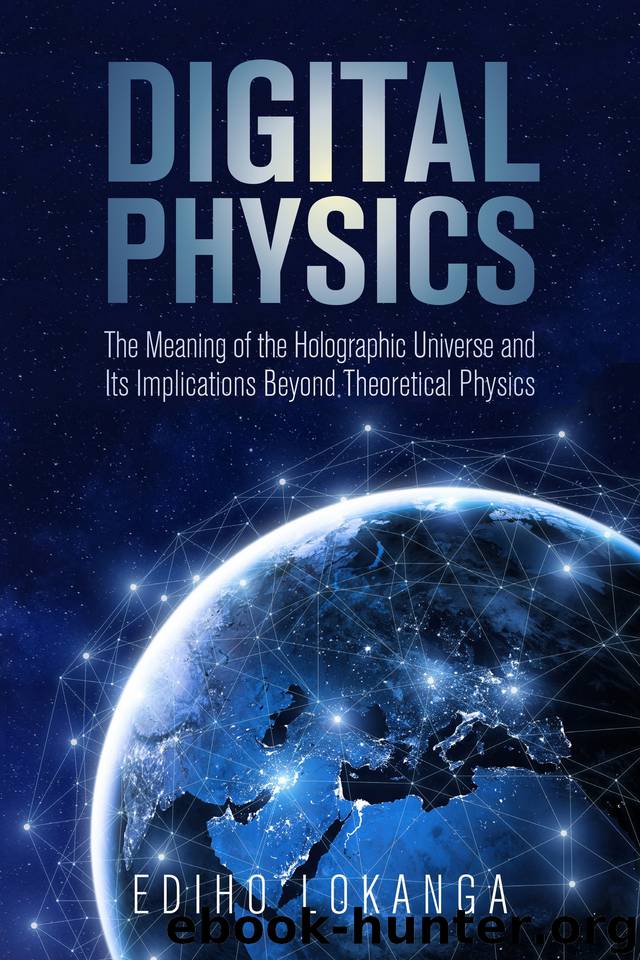Digital Physics:The Meaning of the Holographic Universe and Its Implications Beyond Theoretical Physics by Lokanga Ediho

Author:Lokanga, Ediho [Lokanga, Ediho]
Language: eng
Format: epub
Published: 2018-02-09T16:00:00+00:00
Mordehai Milgrom's MOdified Newtonian Dynamics (MOND)
One of the most important alternative models to date is MOND, the brainchild of Milgrom, an Israeli physicist; in 1983 he proposed a specific change to the Newton equations governing particle motion at very low accelerations. The theory has since been extended by Bekenstein who has published a relativistic version of MOND known as tensor-vector-scalar theory, an extension of GR. One of the most pressing problems in cosmology is how to explain rotation curves at large galactic radii. DM is introduced by the SM to explain the observational evidence of flat rotation curves in disk galaxies.
Milgrom suggests a possible explanation for the flat rotation curve through a modification of Newton's second laws without the need to invoke DM. According to MOND, galaxies do not have a significant dark matter halo. One of the supporters of MOND, Stacy McGaugh, argues that the proposed theory reduces to the usual Newtonian form in the regime of high acceleration, but at accelerations lower than a hundred-billionth of what we feel here on Earth things change in a way that might account for the mass discrepancies in galaxies. What MOND theory is trying to achieve is very elegant and exciting. It incorporates standard dynamics at high accelerations, while forgoing them at low accelerations to explain all aspects of the mass discrepancies in the galactic system without the need for DM.
MOND theory introduces into physics a new constant . The role of this constant is like that of the speed of the light c, in the GR context (departure from classical physics). In this context, in systems with acceleration larger than (a ), the theory reduces to the standard Newtonian theory. This is simply achieved by substituting everywhere the MOND equation . The theory proposes that there is an acceleration under which gravity is stronger than is predicted by Newton's theory. When the acceleration is much larger than Newton's second law remains intact. However, when the acceleration is smaller than , Newton's second law is altered and the force becomes proportional to the square of the acceleration.
MOND considers the observed acceleration in galaxies to be indicative of a smaller force. Thus, we can do away with the need for DM. The theory suggests that the acceleration decreases with distance in the outskirts of galaxies, eventually going below the critical acceleration. The theory applies at very low accelerations (outer regions of spiral galaxies, galaxy groups...). The critical acceleration below which MOND applies is . This value is about one hundred billion times smaller than the acceleration due to gravity on the surface of the Earth. By using MOND with a universal value of , the rotation curves of many galaxies are reproduced without the need to invoke DM.
Download
This site does not store any files on its server. We only index and link to content provided by other sites. Please contact the content providers to delete copyright contents if any and email us, we'll remove relevant links or contents immediately.
The Complete Stick Figure Physics Tutorials by Allen Sarah(7311)
Secrets of Antigravity Propulsion: Tesla, UFOs, and Classified Aerospace Technology by Ph.D. Paul A. Laviolette(5311)
Thing Explainer by Randall Munroe(3877)
The River of Consciousness by Oliver Sacks(3543)
The Order of Time by Carlo Rovelli(3145)
How To by Randall Munroe(3039)
A Brief History of Time by Stephen Hawking(2962)
I Live in the Future & Here's How It Works by Nick Bilton(2938)
The Great Unknown by Marcus du Sautoy(2649)
What If?: Serious Scientific Answers to Absurd Hypothetical Questions by Randall Munroe(2637)
Midnight in Chernobyl by Adam Higginbotham(2485)
Blockchain: Ultimate Step By Step Guide To Understanding Blockchain Technology, Bitcoin Creation, and the future of Money (Novice to Expert) by Keizer Söze(2450)
Networks: An Introduction by Newman Mark(2360)
The Meaning of it All by Richard Feynman(2300)
Easy Electronics by Charles Platt(2282)
The Tao of Physics by Fritjof Capra(2231)
Midnight in Chernobyl: The Untold Story of the World's Greatest Nuclear Disaster by Adam Higginbotham(2179)
When by Daniel H Pink(2084)
Introducing Relativity by Bruce Bassett(2080)
